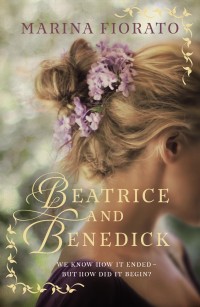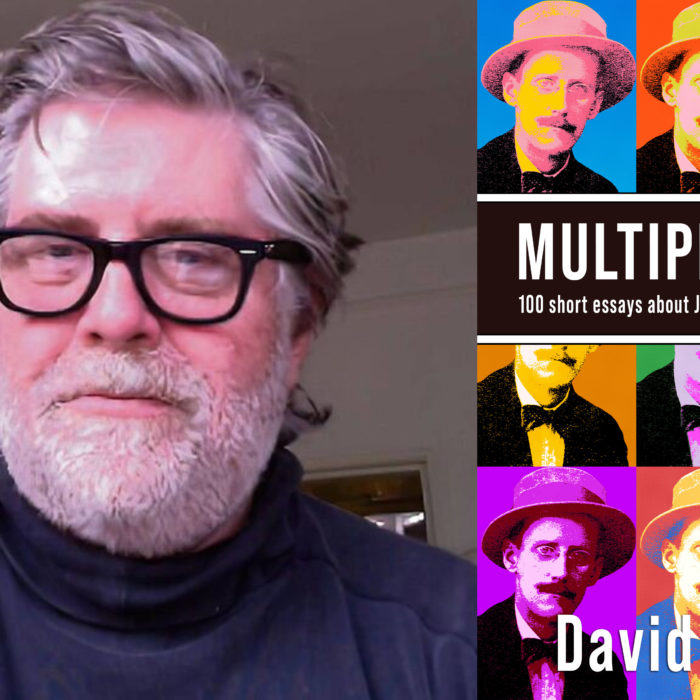You have no items in your cart. Want to get some nice things?
Go shopping Litro: What appealed to you about revisiting Much Ado About Nothing, and specifically the characters of Beatrice and Benedick?
Litro: What appealed to you about revisiting Much Ado About Nothing, and specifically the characters of Beatrice and Benedick?
Marina: I’ve always loved the play ever since it was my set text at ‘A’ level. Beatrice and Benedick were so fresh and funny and modern, they just leapt off the page. I was particularly impressed by Beatrice’s freedom of speech and her wit – she takes on the men at their own game. I’ve read in various critiques that she was an anomaly for her times, but we must remember that this was the era of Elizabeth I, an extremely feisty and witty woman who never let a man best her. I bet Elizabeth enjoyed Much Ado.
Litro: Have you seen any of the screen adaptations of Much Ado (including Joss Whedon’s recent version)? How did they compare with your own reading of the play?
Marina: Yes. I loved the Branagh/Thompson version – I don’t think it’s perfect by any means, but it is such a sunny, happy interpretation that it is irresistible. There is an undeniable (and unsurprising!) chemistry between the two leads, and I am, of course, a sucker for an Italian setting.
I also saw the Joss Whedon interpretation, and although I enjoyed it I think that the modern setting presents certain problems for the text. It is harder to sustain misunderstandings if everybody has a mobile phone, and CCTV cameras are everywhere. And it is not quite as sinful, these days, to have a chat with a man who is not your fiancée the night before your wedding. You might have some explaining to do, but you would not be shunned from society, as you would have been in the 16th century when a woman’s chastity was everything. The most interesting thing about it for me was that the film begins with a love scene between a younger Beatrice and Benedick, clearly referencing an earlier relationship, which is what my book is all about.
Litro: Is it right that you studied Shakespeare in some depth at University? How did that affect the way you approached this book?
Marina: Yes, I wrote my dissertation on the value of Shakespeare as an historical source, concentrating on courtship and the making of marriage in the plays. When I began this novel I was glad I had all the academic background, but then I had to throw it all away, and just let the characters speak. The characters are not aware of their larger historical context. No one lives as if they are on a timeline and no one thinks they are old-fashioned. Beatrice and Benedick think they are desperately modern, and I try to remember that.
Litro: How conscious were you of following in Shakespeare’s footsteps, especially in terms of the language he used and the themes he presented?
Marina: To begin with the weight of his genius absolutely crippled me. I had what I thought was this terrific idea that all the characters would speak as if they were in the play, in iambic pentameter as far as possible, using numerous references from the text. The first scene I wrote was dreadful, so stilted and false and mannered. No one speaks that way. So I stopped trying to be ‘Shakespearean’ ; I was on a losing wicket in any case, because no one can do that better than he. So I threw out that idea and just wrote the characters I knew, with a contemporary cadence. And that’s when Beatrice and Benedick began to speak to me.
Litro: You present several Moorish characters in the novel, as Shakespeare did in his plays. But modern attitudes towards race and ethnicity are very different to the attitudes in his day. How did you tackle this difference?
Marina: This was an interesting one. I was aware that I didn’t want to be too ‘modern’ in my interpretation of inter-racial relationships at that period. But, just as today, there was a vast difference in how Moorish people were treated in different parts of Italy and I reference this in the novel. In Padua, which was a university town stuffed with all different nationalities and races, Moors were treated respectfully. Verona had a black patron saint, Saint Zeno, and a liberal attitude to her Moorish citizens. Some places changed over time; Sicily, because of her proximity to Africa, was somewhat of a melting pot. One of her festal icons, Grifone, is a black conqueror, and for centuries the Moors integrated readily into Sicilian society, resulting in many mixed race families such as the Crollalanzas in my book. But attitudes changed with the Spanish occupation, when the Moors were expelled from the island in line with wider Spanish policy. And that, as they say, is when the trouble began.
Litro: I’m sure you’re aware that it’s the 450th anniversary of Shakespeare’s birth this April. If he were still alive, what would you write in his birthday card?
Marina: Thank you for the words, words, words.
Litro: And finally, what can we expect from you next? Do you think you’ll ever revisit the Bard?
Marina: Funnily enough, once I finished Beatrice and Benedick I was completely in that zone – I trawled my favourite plays for characters that were begging to be brought to light, to tell their own stories. Creatively speaking, I would love to do that but the cold hard truth is that it will all depend on how Beatrice and Benedick does – if it finds a wide enough audience then yes, bring on the Bard!

Beatrice and Benedick by Marina Fiorato is published by Hodder & Stoughton in Trade Paperback on 8th May, £13.99. Buy it from Foyles.
Marina Fiorato is half-Venetian. She was born in Manchester and raised in the Yorkshire Dales. She is a history graduate of Oxford University and the University of Venice, where she specialized in the study of Shakespeare’s plays as an historical source. After university she studied art and since worked as an illustrator, actress and film reviewer. Marina was married on the Grand Canal and lives in north London with her husband, son and daughter. She is the author of six novels: The Glassblower of Murano, The Madonna of the Almonds, The Botticelli Secret, Daughter of Siena, The Venetian Contract and now Beatrice and Benedick. She was shortlisted for the Romantic Novelists’ Association Historical Fiction Award for Daughter of Siena.
About Dan Coxon
Dan Coxon is the Magazine Editor for Litro.co.uk, and the author of Ka Mate: Travels in New Zealand. He lives in London, where he spends his spare time looking after his two-year old son, Jacob. His writing has most recently appeared in Salon, The Portland Review, Neon, Gutter, The Weeklings, The Nervous Breakdown, Spartan, and the Ben Tanzer-edited anthology Daddy Cool. Find more of his writing at www.dancoxon.com, or follow him on Twitter @DanCoxonAuthor.



